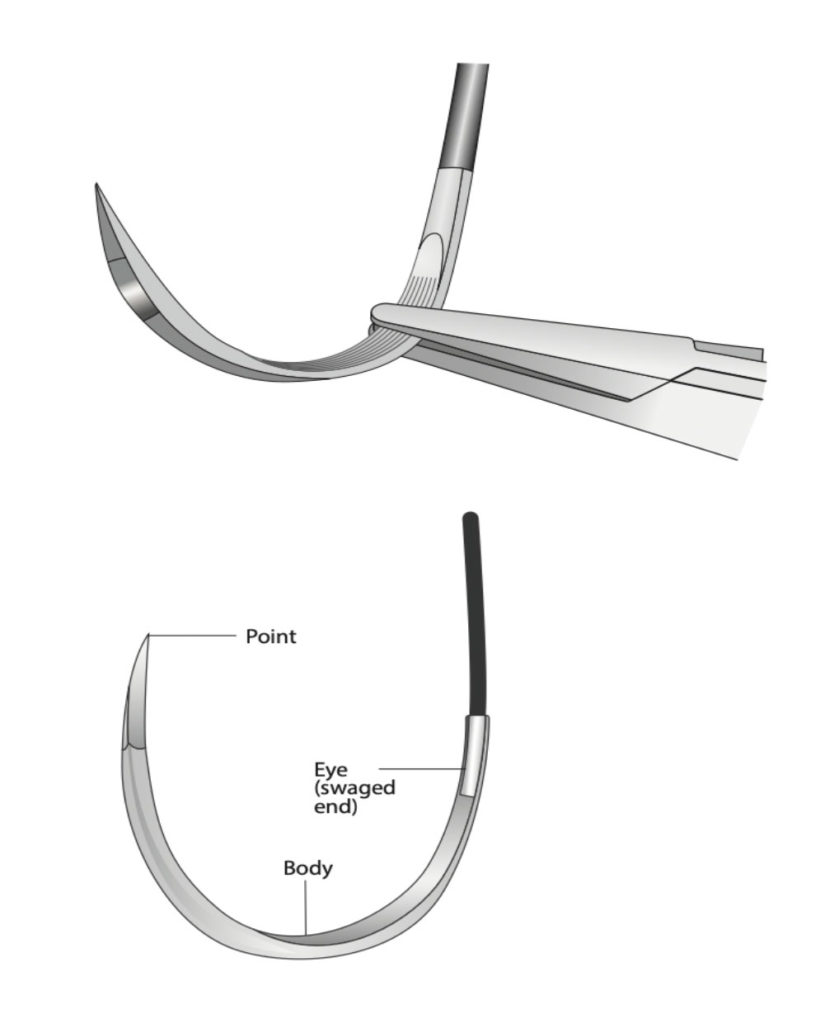Suture Materials
Most sutures with the suture material swaged onto the base of the needle
Shapes vary from a quarter circle to five-eighths of a circle, depending on how confined the operating field is
Choice of the needle should ‘alter the tissue to be sutured as little as possible’ and is dependent on:
- The tissue being sutured (when in doubt about the selection of a tapered point or cutting needle, choose the taper for everything except skin sutures)
- Ease of access to the Individual tissue preference.

Properties of suture material
- Handling of a suture
- Memory
- The tendency to stay in one position
- Leads to difficulty in tying sutures and knot unravelling
- Elasticity
- Knot strength
- The force required for a knot to slip
- Important to consider when ligating arteries
- Memory
- Tensile strength
- The force necessary to break a suture
- Important to consider in areas of tension (linea alba)
- Tissue reaction
- Undesirable since inflammation worsens the scar
- Maximal between Day 3&7
Types of sutures
- Monofilament (Ethilon or Prolene)
- Consists of a single smooth strand
- Less traumatic since they glide through tissues with less friction
- May be associated with lower rates of infection.
- More likely to slip and should be secured with 5 or 6 ‘throws’ (in contrast to 3 throws with multifilament)
- Preferred for skin closure because they provide a better cosmetic result
- Multifilament (Mersilk or Mersilene)
- Consists of multiple fibres woven together
- Easier to handle and tie and knots are less likely to slip.
Classification of sutures
Non-absorbable suture material
Composed of materials which can be:
- Naturally occurring (Mersilk, cotton and steel)
- Synthetic (Prolene, Ethilon)
Absorbable suture material
Composed of biodegradable materials which can be?
- Naturally occurring (degraded enzymatically)
- Catgut (no longer used in routine practice)
- Consists of processed collagen from animal intestines
- Broken down after seven days
- Chromic catgut
- Consists of intestinal collagen treated with chromium
- Loses tensile strength after 2-3 weeks and is broken down after three months
- Synthetic
- Degraded non-enzymatically by hydrolysis when water penetrates the suture filaments and attacks the polymer chain
- Tend to evoke less tissue reaction than those occurring naturally.

Whats on the packaging:

